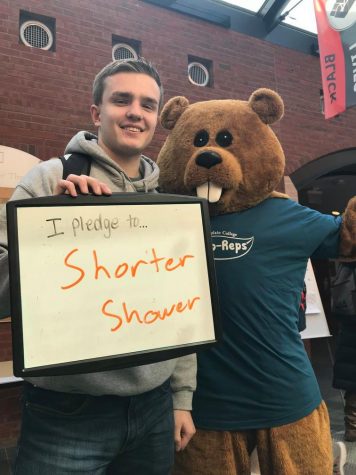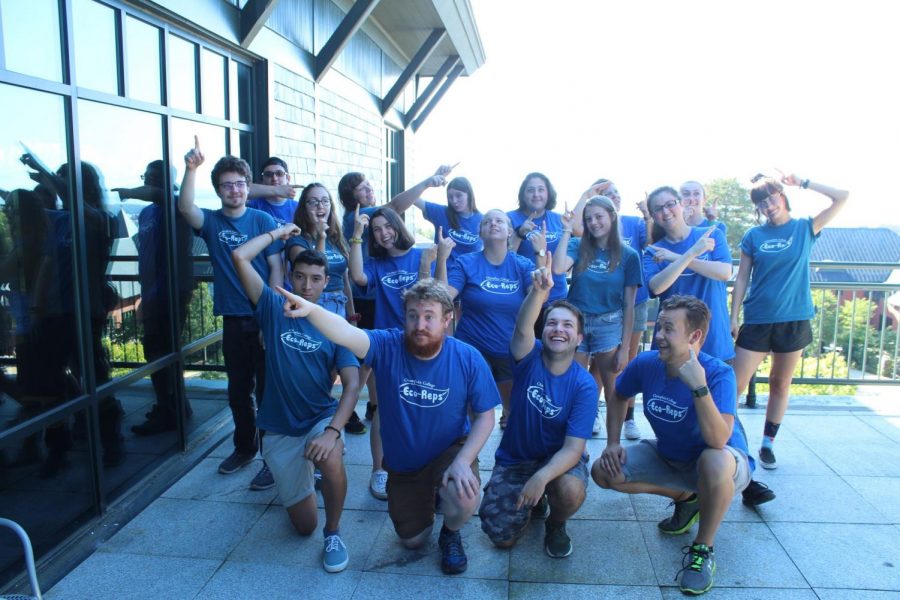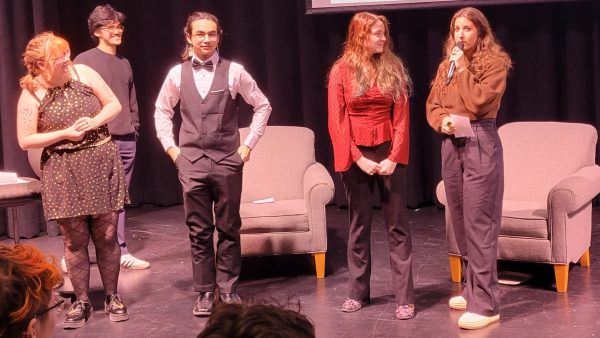A Green Campus
Burlington, Vermont is consistently named as one of the “greenest” cities in the United States. Champlain College, and the culture their students have created, have had a significant impact on those headlines.
The college doesn’t use a power plant because other resources are available. Champlain purchases its energy from the Burlington Electric Department, which has recently achieved 100% renewable energy. In residential housing on campus, the energy that is used to heat the buildings comes from gas-fueled boilers in the buildings. Electricity is used to bring power to the kitchens, machinery, and every outlet.
One green resource that many students aren’t aware of are the “giant boxes” behind the Carriage House residence hall. Inside these boxes are ice tanks that cool down the parts of the campus during summertime. Christina Erickson, the Learning Director in charge of the Center for Service & Sustainability, states, “During off-peak electricity hours, these tanks create ice, while during peak hours, they melt the ice.” This process helps air condition certain academic and residential buildings on campus. How cool is that?

The Champlain College Master Plan from 2007 is still in effect today, with many goals near or in the process of completion. The Master Plan includes sustainability principles such as:
- “Seeking alternative practices and procedures to reduce our fossil fuel energy consumption and minimize negative impacts on the environment.
- Conserving natural resources and restoring environmental quality.
- Protecting the biodiversity of our Lake Champlain region.
- Considering the social, economic, and environmental impacts of Champlain College’s operational policies on the greater Burlington community.
- Fostering a participatory process in developing “Sustainable Champlain” policies.
- Striving to construct LEED-certifiable buildings.
- Continuing to support the Post Carbon Committee’s activities.”
These principles sound great, and Champlain is genuinely working toward these goals. To make sure students and departmental heads are keeping on track with the Master Plan goals, Champlain’s Eco-Rep Program helps highlight these priorities on campus. The program has student representatives working within residence halls to raise students’ engagement and involvement in making changes which impact the entire community.
One example that Champlain’s upper-class students are familiar with is the annual Kill-A-Watt Challenge. Usually held in February, this event has students of come together within their residence halls and vow to save as much energy as they can during a two-week period. The event has led to residence halls reducing as much as 20 percent of their energy usage. Eco-Reps promote green habits such as turning off lights when leaving a room, using power strips, and unplugging devices that use phantom power—like televisions and video game consoles.
Eco-Reps take their work seriously. For instance, they will come into residence halls to hold events and game nights that keep students away from their electronics for the night. Champlain College and its Eco-Rep program educate students on the impact that energy usage has on a global scale. This education helps residents take the event extremely seriously, leading to a great turnout every year. Eco-Rep Maggie Woodman says, “The Kill-A-Watt Challenge is really fun and I love trying out new ways to save energy and see how it impacts our score.”

Every semester, students experience community-wide changes of all kinds first-hand. From the free bus pass students receive as part of their Champlain ID cards, to the introduction of the bike-share program just this year, students enjoy a variety of sustainable amenities. Champlain’s involvement and community engagement has passed through the lens of a job task or a resume builder, but has grown to become a passion through the student body. Alongside energy, resources such as water, waste, transportation, and land are some of the most important issues that need to be looked at with more focus and intent on action.
Champlain students attend an institution that keeps its promises of sustainability. With the annual Kill-A-Watt Challenge increasing in participation and attendance each year, the campus and community are on track with their sustainable goals.











